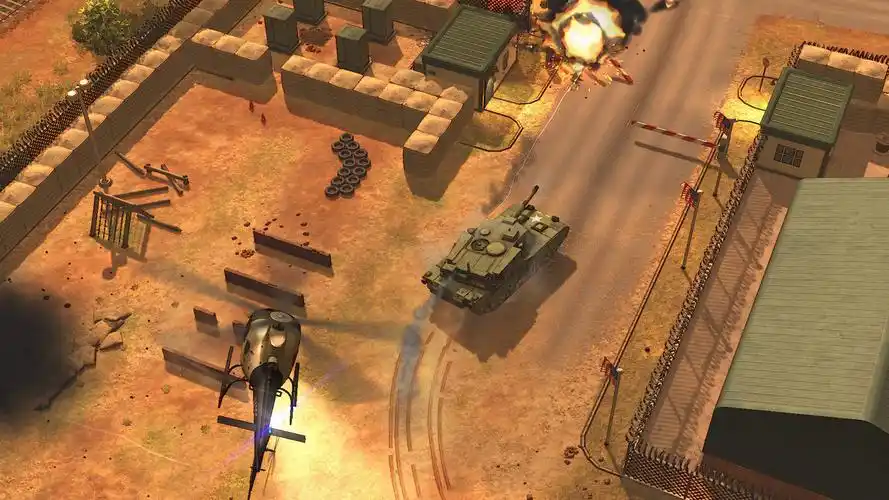Title: Beyond the Sign: How 'Surprise Attack Shelter Sign Installer Simulator VR' Forges a New Genre with its Place Missions Update
The virtual reality landscape is often a dichotomy of extremes: the adrenaline-fueled chaos of shooters and the serene, almost meditative, calm of puzzle and exploration titles. Rarely does a game attempt to bridge this gap, to find profound meaning in the mundane while simultaneously evoking a deep, visceral tension. Surprise Attack Shelter Sign Installer Simulator VR (SASSIS VR) was already a cult classic for its bizarrely compelling premise. Now, with its groundbreaking ‘Place Missions’ update, it has transcended its simulator roots to become something far more impactful—a poignant commentary on duty, preparedness, and the quiet heroes of a world on the brink.
For the uninitiated, the core gameplay of SASSIS VR is exactly what the title promises. You are a municipal worker tasked with installing bright yellow, reflective signs that direct citizens to the nearest bomb shelter in the event of a surprise attack. The core loop was satisfyingly tactile: using your VR controllers to drill into concrete, align the sign perfectly, secure the bolts, and peel off the protective film. The genius lay in its atmosphere; the sun-drenched, eerily quiet suburban streets were punctuated only by the distant sound of children playing and the occasional bird song, creating a dissonance that was both peaceful and deeply unsettling.
The ‘Place Missions’ update doesn’t just add new locations; it completely recontextualizes the entire experience. Previously, your job was procedural. Now, it’s personal.
The Mechanics of Meaning
The update introduces a new layer of environmental storytelling through specific ‘Place Missions’. You are no longer just following a city-wide work order. You are now given assignments with context. A mission briefing might read: "Install Sign #B-42 at 22 Oak Avenue. Resident, Mr. Aris, elderly, lives alone. Has expressed concerns about mobility and response time."
Suddenly, the job changes. As you arrive at the modest home, you might see an old man tending to his roses in the virtual reality space. He might wave, or ignore you, or in a particularly powerful scripted sequence, approach you and ask, “Will they be able to see it? From the window?” Your installation is no longer an abstract task. You are placing this sign for him. The weight of the drill in your hand feels heavier. The need for perfect clarity and visibility isn’t about passing a quality check; it’s about a potential lifeline.
Other missions deepen this narrative web:
- The School Zone: Installing signs around a playground, the sounds of laughter and shrieks of joy are no longer just background noise. They become a stark reminder of what you’re trying to protect. The mission here isn't just to install, but to optimize placement for maximum visibility for teachers and parents in a panic.
- The Industrial Complex: A night mission where you must place signs along a labyrinthine network of warehouses. The briefing warns of poor lighting and high employee density. The tension is palpable. The familiar drill whirrs echo ominously in the vast, dark space, and the VR headset’s limited field of view makes every shadow feel threatening. The ‘surprise attack’ isn’t just a concept; it’s a feeling, a pressure that builds with every sign you secure.
The Psychology of Preparation
This is where SASSIS VR truly shines. The ‘Place Missions’ exploit a sophisticated psychological principle: the illusion of control. In the face of unimaginable chaos—a surprise attack—your role is one of pure, rational preparation. You are the antithesis of chaos. By meticulously performing your duty, you are creating order. Each perfectly leveled sign, each tightly fastened bolt, is a small victory against the inevitable unknown.
The update introduces a subtle grading system based on criteria like visibility, durability, and adherence to the specific context of the mission. Installing a sign for the elderly Mr. Aris isn’t successful just because it’s on the wall; it’s successful if it’s placed at the correct eye level and angle for someone who might not be able to turn their head quickly. This transforms the gameplay from a simple simulator into a thoughtful, empathy-driven puzzle.
The ultimate surprise attack in SASSIS VR is not a cinematic explosion or an incoming missile alert (though the original game’s rare, heart-stopping drills remain). The true attack is the slow, creeping realization of responsibility that the ‘Place Missions’ instill. It’s the cognitive dissonance of performing a peaceful, almost Zen-like task with the knowledge of its apocalyptic purpose.
A New Genre: The Empathetic Simulator

With this update, SASSIS VR carves out a new niche: the Empathetic Simulator. It uses the immersive power of VR not for power fantasies or sheer escapism, but to foster a deep, quiet connection to a character and a cause. You don’t feel like a superhero; you feel like a public servant. The reward isn’t a high score or a new weapon; it’s the somber satisfaction of a job done well for the sake of others you’ve never truly met, but whose lives you’ve quietly touched.
The ‘Place Missions’ update for Surprise Attack Shelter Sign Installer Simulator VR is a masterclass in game design. It proves that profound emotional resonance can be found in the most unexpected places—on a quiet street, with a power drill in your hand, and the safety of a community on your mind. It’s no longer a joke or a novelty; it’s a vital, thoughtful, and unforgettable experience.
Tags: #VRGaming #GameDesign #SimulatorGames #VirtualReality #SASSISVR #PlaceMissionsUpdate #IndieGames #GamingCommunity #EmpatheticGaming #SurpriseAttackShelterSignInstallerSimulator


















